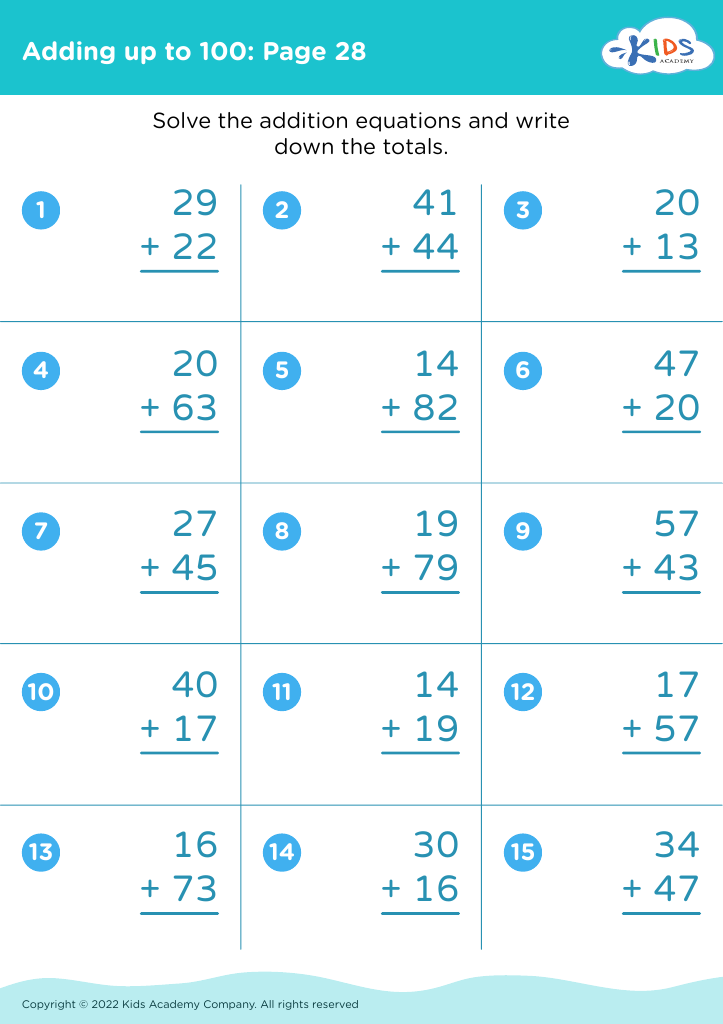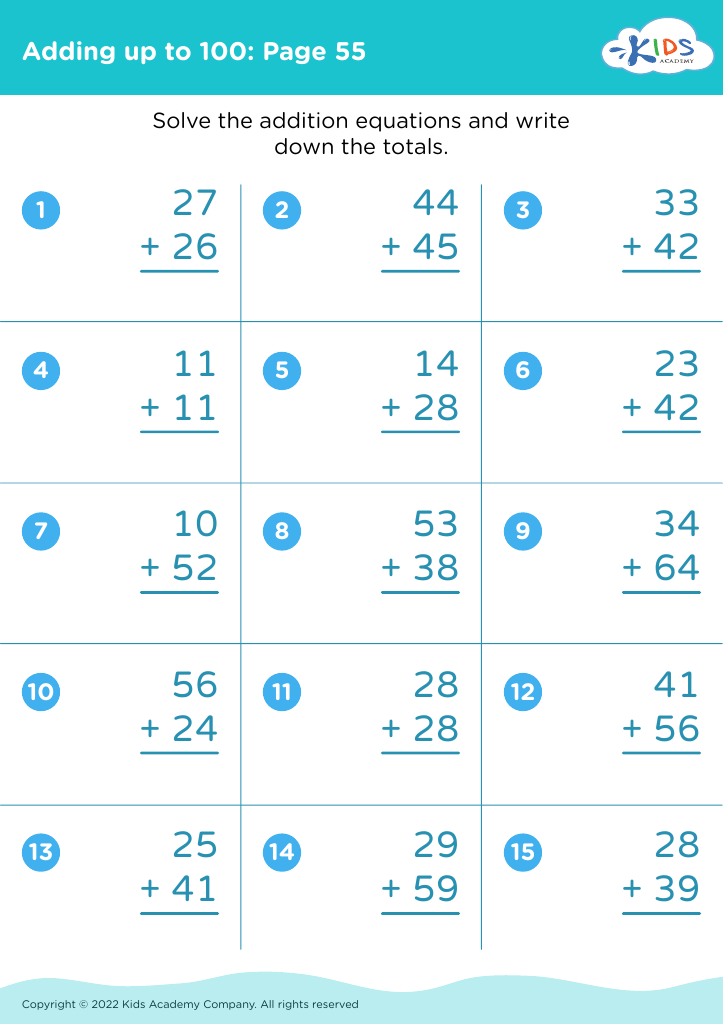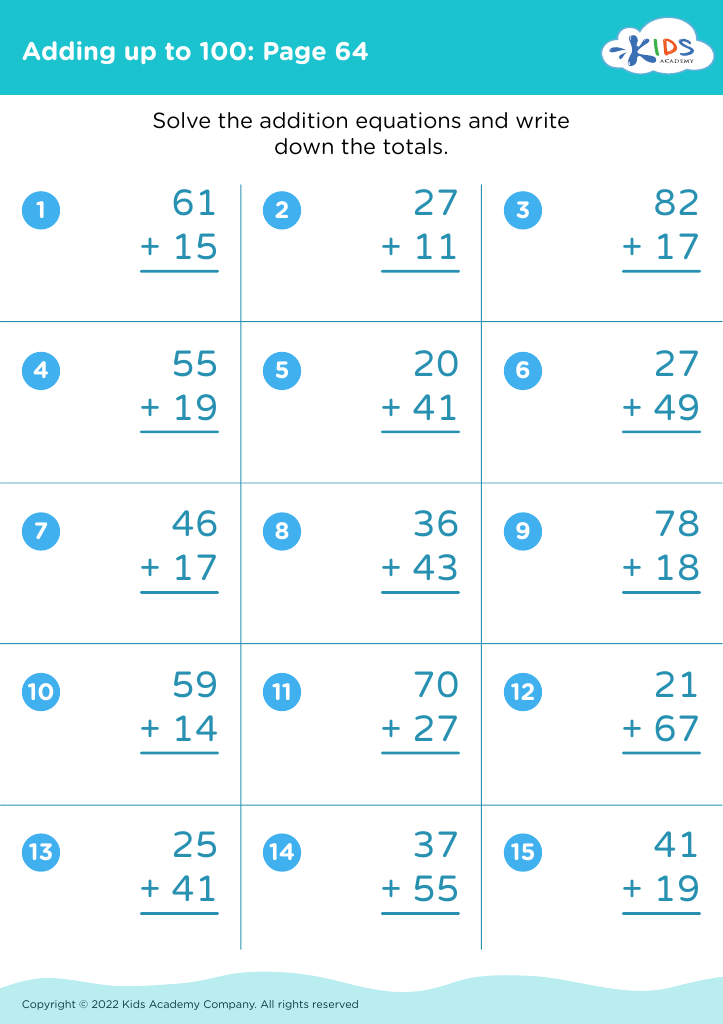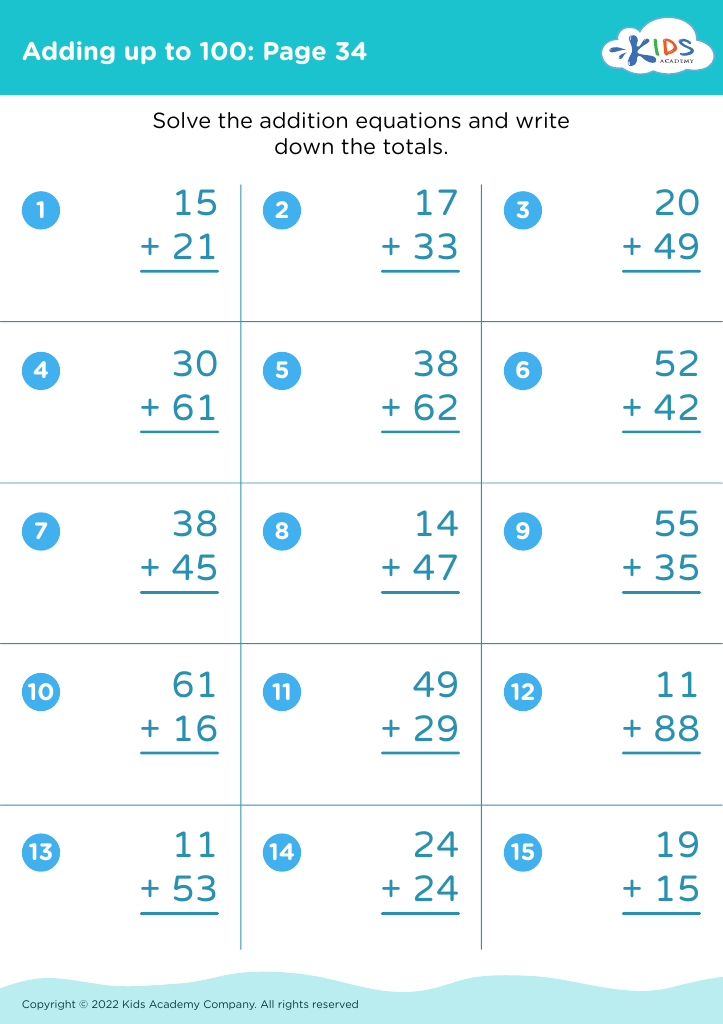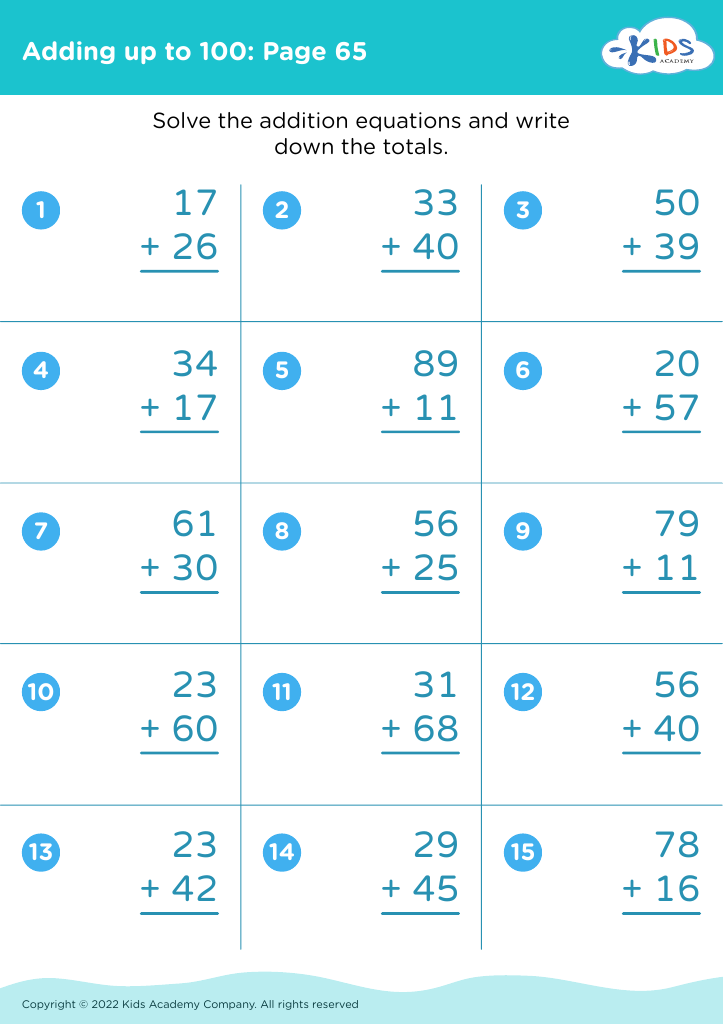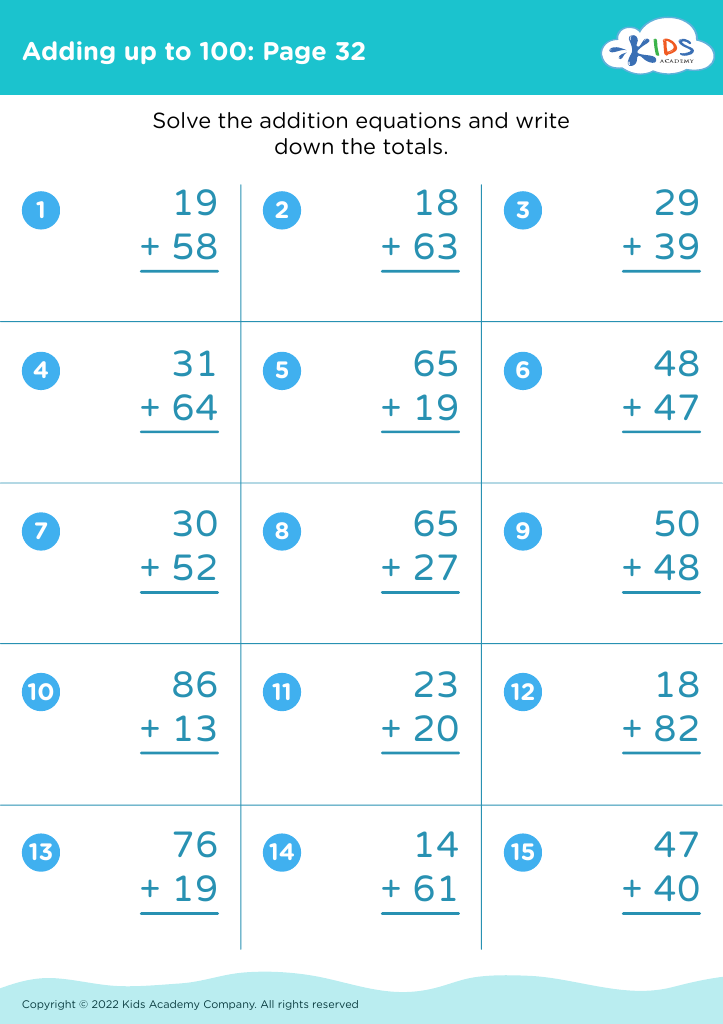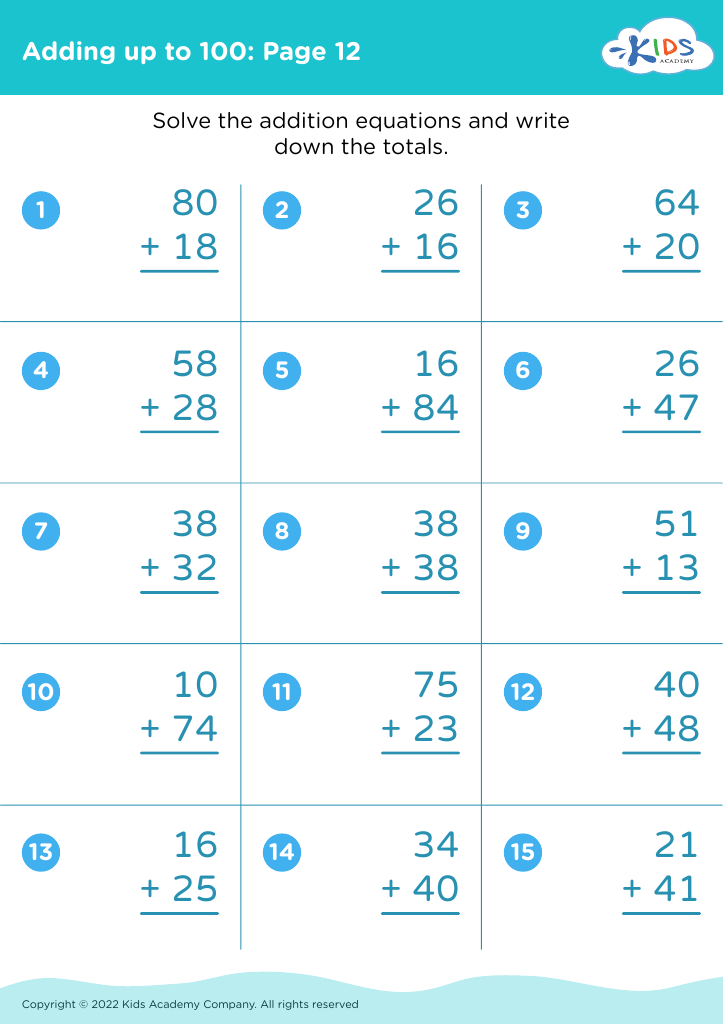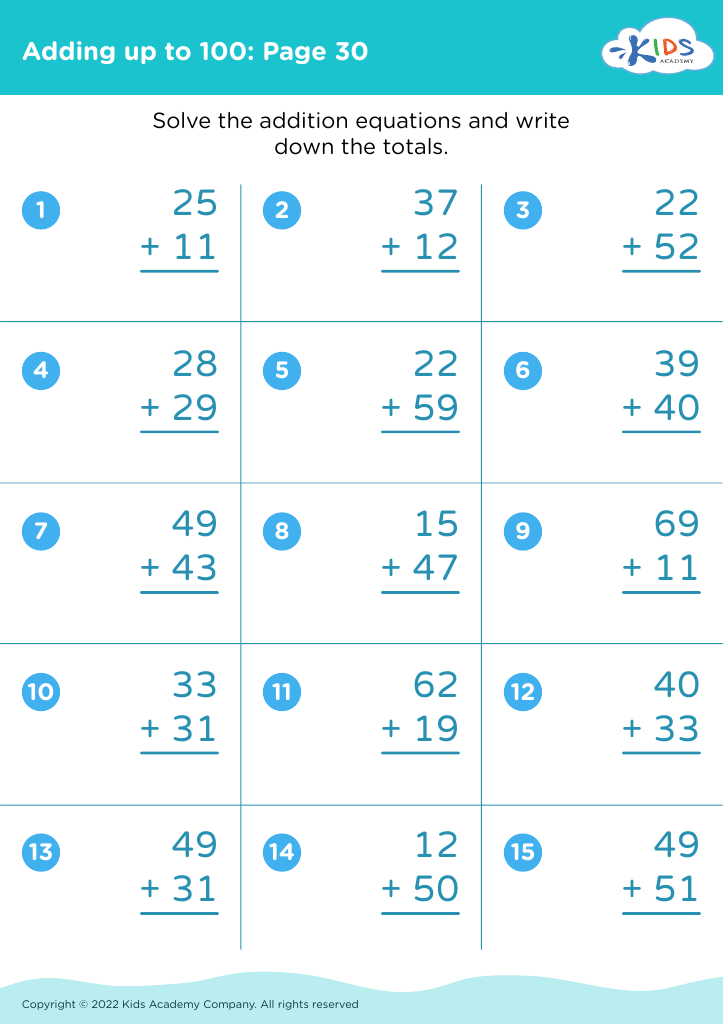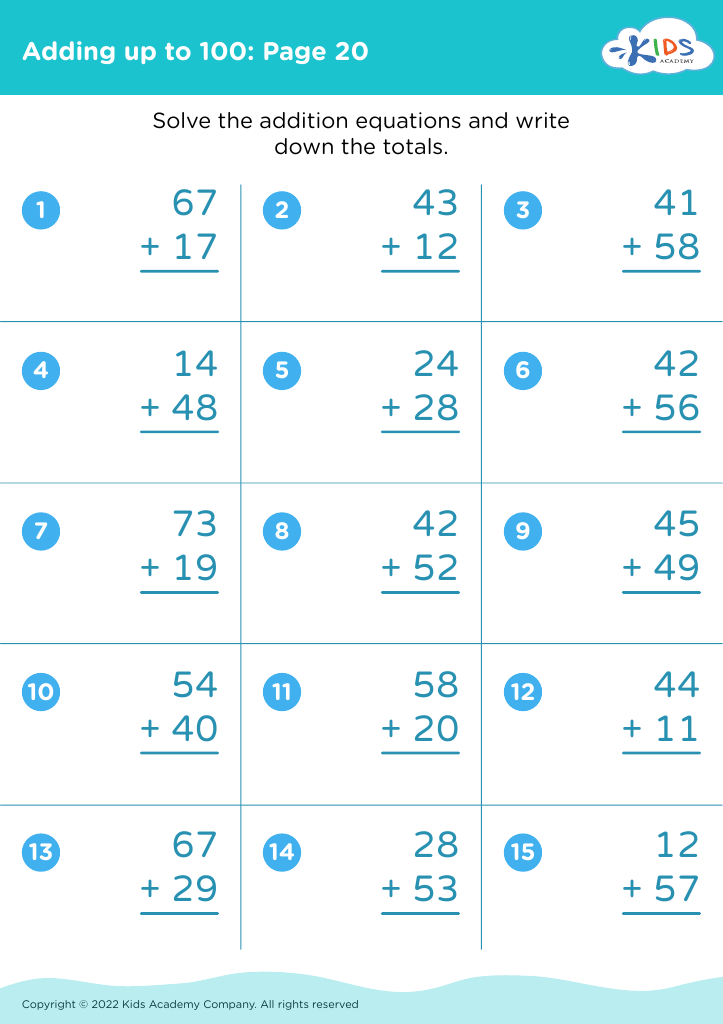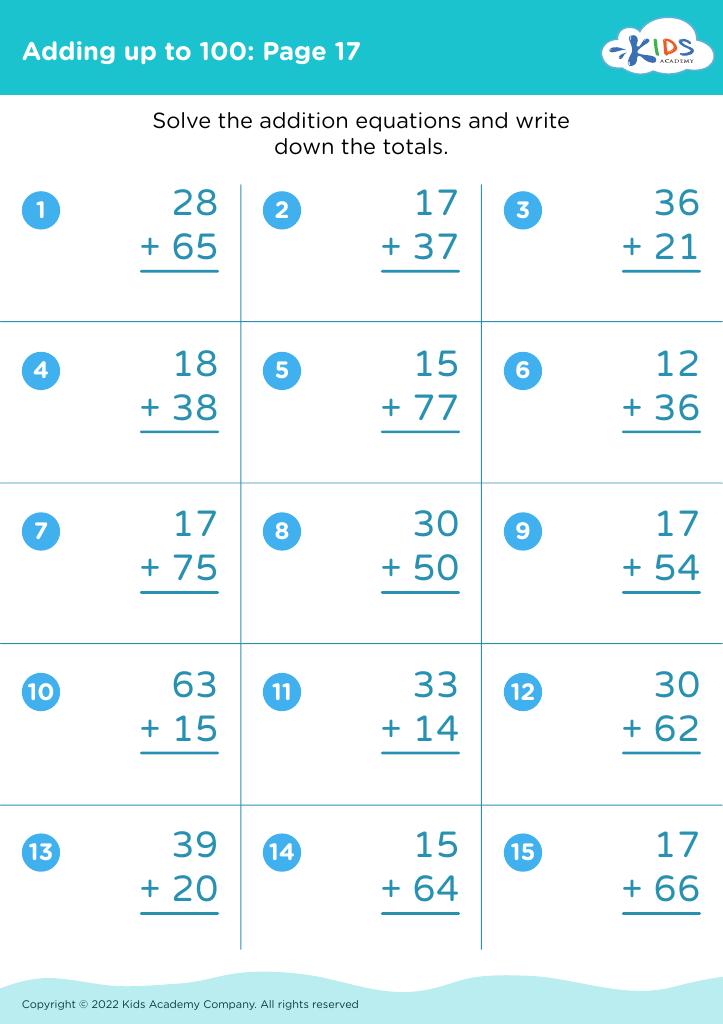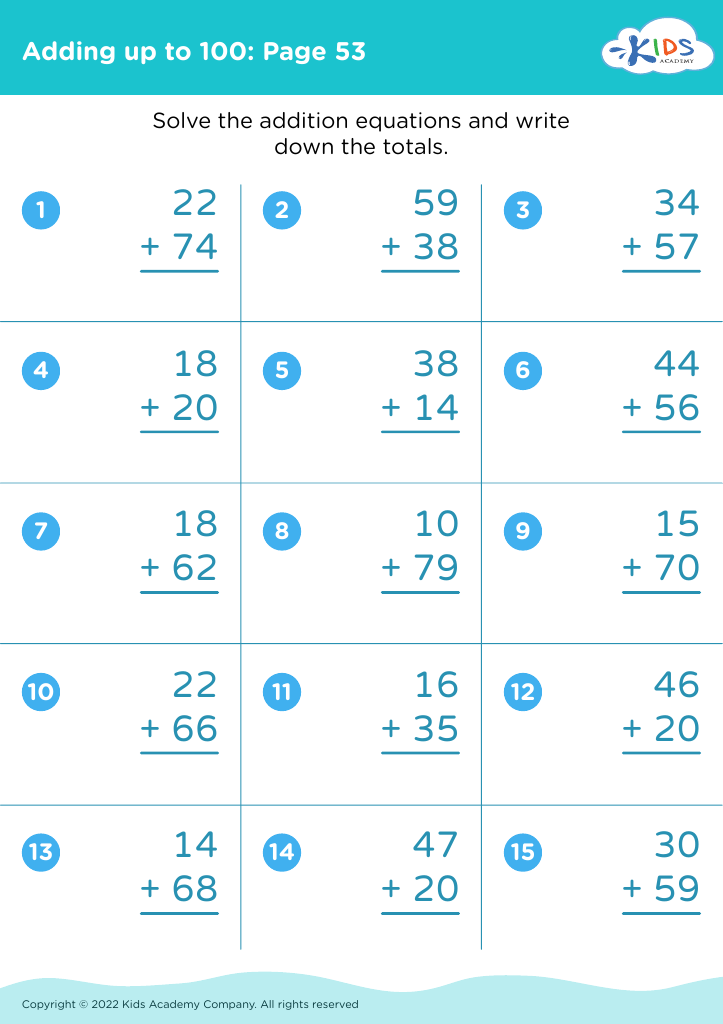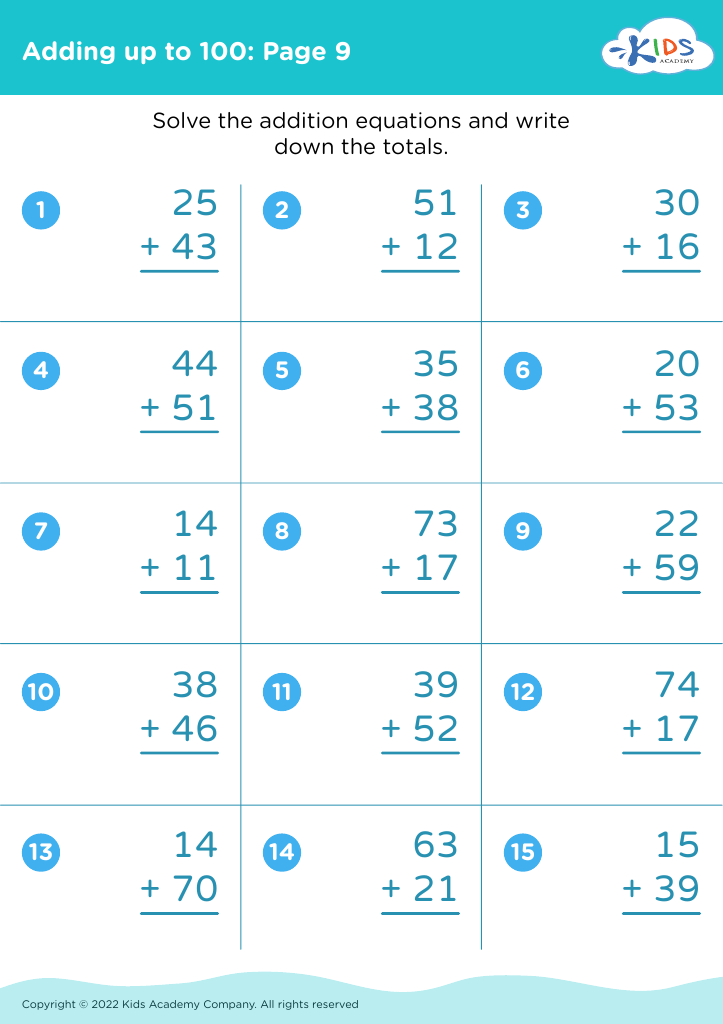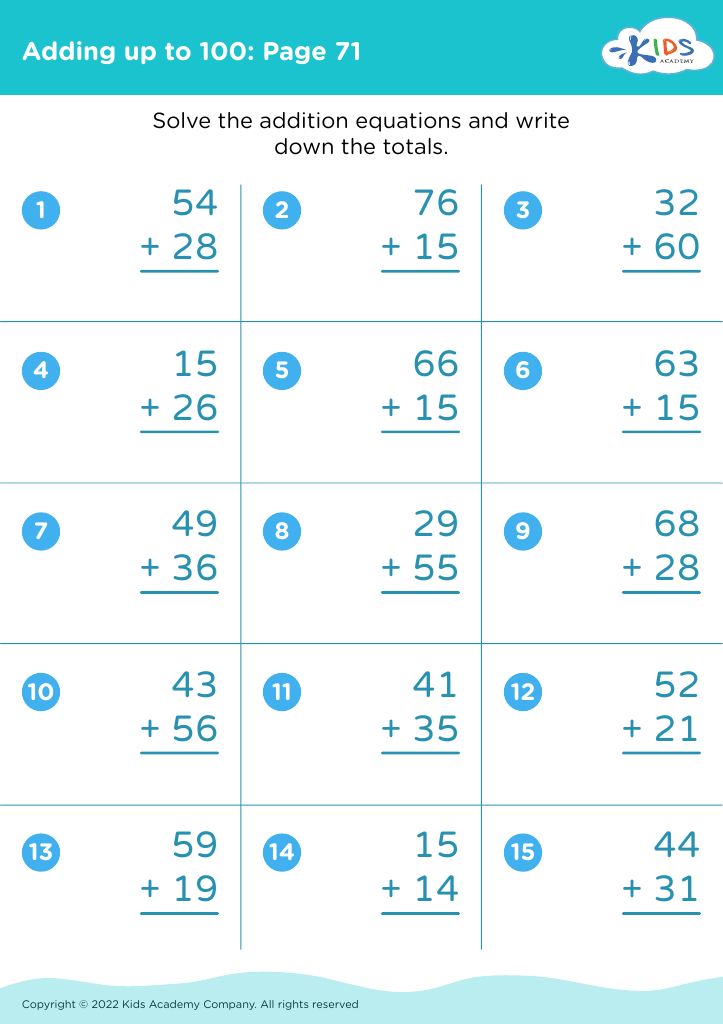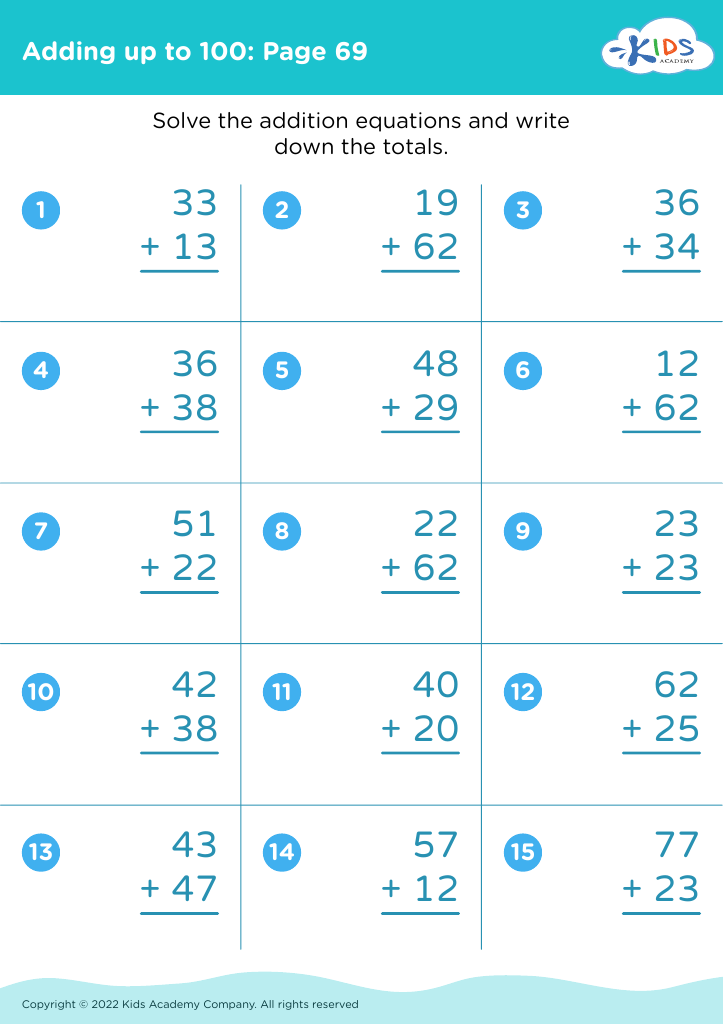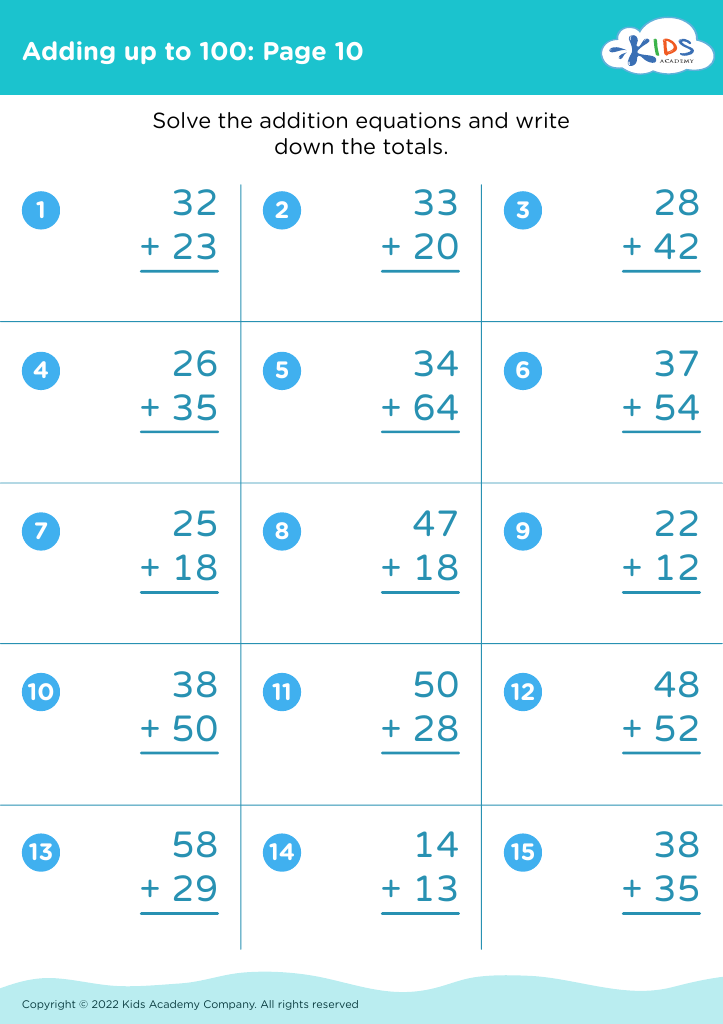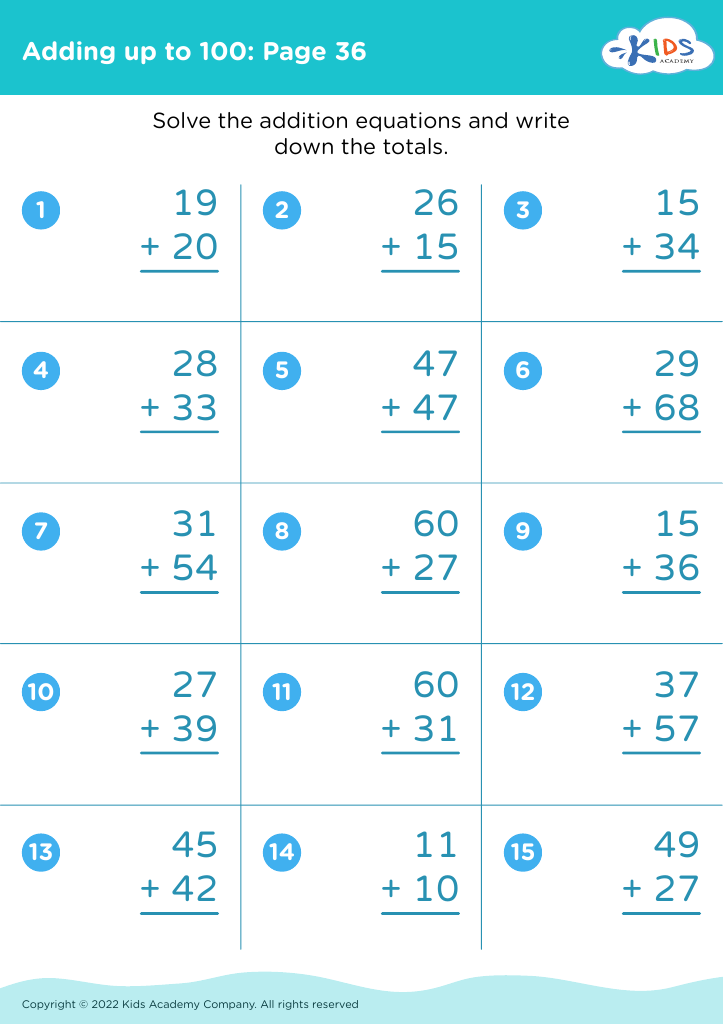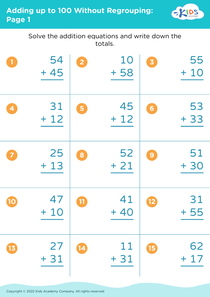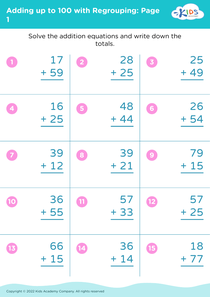Understanding fractions Adding up to 100 Misc Worksheets for Ages 6-8
16 filtered results
-
From - To
Explore our engaging "Understanding Fractions Adding up to 100" worksheets designed for children aged 6-8! This collection offers various creative and interactive activities that help young learners grasp the concept of fractions in a fun and meaningful way. With vivid illustrations and real-life examples, these worksheets facilitate the understanding of how fractions add up to 100, making math both relatable and enjoyable. Ideal for classroom settings or home learning, our resources empower kids to build confidence in their mathematical skills while encouraging critical thinking. Get your little ones excited about math today and watch them excel in their understanding of fractions!
Understanding fractions is crucial for children aged 6-8, as it forms the foundation for mathematical skills they will use throughout their education and everyday life. In this age group, children are beginning to grasp the concept of part-whole relationships and proportional reasoning. Learning to add fractions that sum to 100 introduces them to vital concepts in measurement, division, and problem-solving.
For parents and teachers, promoting fraction understanding encourages critical thinking and enhances numerical fluency. Mastering fractions empowers children to approach real-life applications, such as cooking, budgeting, and assessing data—skills essential for their overall development. Additionally, it supports their understanding of more complex math concepts introduced in later grades.
Engagement with fractions encourages collaboration, as children often work together during math activities, fostering social skills and teamwork. Moreover, introducing fun, relatable contexts for understanding fractions strengthens children's interest in math, reducing anxiety around the subject.
Ultimately, a strong grasp of fractions prepares children for advanced mathematical concepts, ensuring academic success and confidence in their mathematical abilities. By prioritizing this fundamental skill, parents and teachers equip children with the tools they need to navigate both academic challenges and real-world scenarios effectively.
